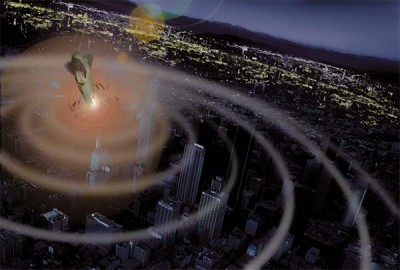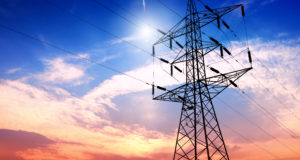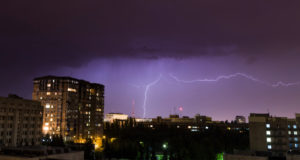
Image source: Flickr
America’s military commanders are worried about the possibility of an attack on the United States by an electromagnetic pulse (EMP) weapon – so much so that the Pentagon plans to spend nearly $1 billion to move the North American Aerospace Defense Command (NORAD) communications into an EMP-resistant bunker.
“Because of the very nature of the way that Cheyenne Mountain is built, it’s EMP-hardened,” NORAD’s commander, Admiral William Gortney, said in April (2015).
Cheyenne Mountain outside of Colorado Springs is the location of a giant bunker where NORAD’s headquarters was located from the 1960s until 2006. NORAD is the organization that guards the United States and Canada from missile attacks.
The Cheyenne Mountain bunker was designed to protect NORAD’s equipment from Soviet nuclear missile attacks during the Cold War.
The Defense Department has signed a $700 million contract with Raytheon to install modern communications equipment in the facility.
Back To The Future
All total, the Pentagon will have spent around $850 million to modernize the facilities inside Cheyenne Mountain, Defense One reported. Most of NORAD’s staff pulled out of Cheyenne Mountain and moved to Peterson Air Force Base in Colorado Springs in 2006.
The military’s experts believe that the mountain will protect NORAD’s systems from electromagnetic pulses, Gortney told the press.
“It wasn’t really designed to be that way, but the way it was constructed makes it that way,” the admiral said of Cheyenne Mountain. He did not mention any specific threats, but other nations like Russia and Iran could launch EMP weapons.
The most recognized form of an EMP attack would involve a nuclear explosion high in the atmosphere above the U.S., which would knock out the electrical grid and could create a nationwide blackout, perhaps for months or even up to a year. It would fry electronics. If the grid is down for a year, at least two-thirds of Americans likely would perish from starvation, a lack of medical supplies and civil unrest.
LA Times: US Missile Defense Does Not Work
 Meanwhile, The Los Angeles Times reported that the United States is vulnerable to a long-range missile attack, even though the Defense Department spent $10 billion on technologies designed to stop such assaults.
Meanwhile, The Los Angeles Times reported that the United States is vulnerable to a long-range missile attack, even though the Defense Department spent $10 billion on technologies designed to stop such assaults.
A Times investigation discovered that the Missile Defense Agency (MDA) failed completely in its mission to develop a shield capable of preventing enemy missiles from hitting North America. Disturbing facts uncovered by The Times included:
- All of the anti-missile defenses created by MDA could be easily thwarted by the simple strategy of launching large numbers of decoy missiles at American soil.
- The MDA spent $5.4 billion developing a weapon called the Airborne Laser that was so ineffective it was scrapped in 2012. The weapon was a laser beam designed to destroy missiles in flight. It never worked and even if it had, the laser was fired from Boeing 747 jets that could be shot down by enemy missiles or fighter planes.
- Another weapon, the Kinetic Energy interceptor, was designed to destroy other missiles but was abandoned because it was too big to fit on Navy ships. It cost $1.7 billion.
- A third weapons system, the Multiple Kill Vehicle, was so ineffective it was never tested even though the MDA spent $700 million on it.
- The cornerstone of the missile defense efforts, a floating radar system called the Sea Based X Band Radar, or SBX, is also a failure. The SBX was incapable of tracking the most likely enemy missile attack even though it cost $2.2 billion.
“If an enemy launched decoys along with real missiles, U.S. radars could be fooled, causing rocket-interceptors to be fired at the wrong objects — and increasing the risk that actual warheads would slip through,” The Times wrote of SBX.
The LA Times isn’t the only one that is critical of the Pentagon.
“The management of the organization is one of technologists in their hobby shop,” L. David Montague, the former president of missile systems for Lockheed Corp, said of MDA. “They don’t know the nitty-gritty of what it takes to make something work.”
It looks as if America may be more vulnerable to attack than we thought — and the Pentagon knows it.
Are you concerned about a potential EMP attack? What do you believe is the greatest threat to the grid? Share your thoughts in the section below:
 Off The Grid News Better Ideas For Off The Grid Living
Off The Grid News Better Ideas For Off The Grid Living



